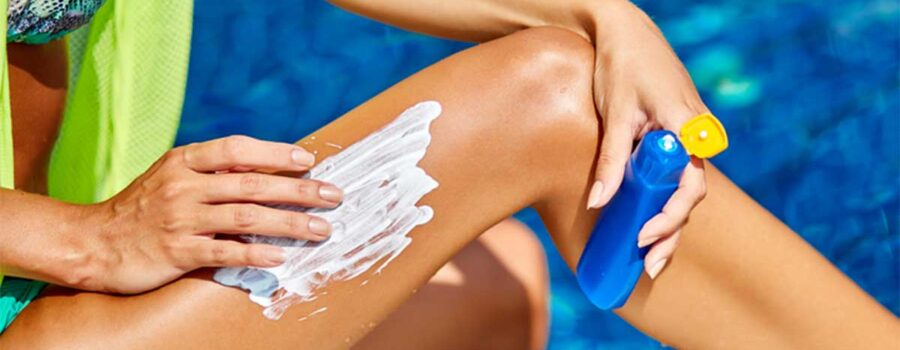As we all know, protecting our kids (and ourselves) from the sun is crucial. I wanted to share what I’ve learned about the FDA’s New Sunscreen Regulations these changes and how they might impact your family’s sun protection routine.
Understanding the Changes: What’s the Deal with Sunscreen Ingredients?
First, let’s talk about the active ingredients in sunscreens. Currently, only two ingredients, zinc oxide, and titanium dioxide, have been recognized as safe and effective by the FDA. The other 14 ingredients, such as oxybenzone and avobenzone, still need more research. So, make sure to choose sunscreens with either zinc oxide or titanium dioxide for the best protection.
Cracking the Code: Decoding Sunscreen Labels
The FDA is proposing new labeling requirements to help us better understand a sunscreen’s protection capabilities. Look for labels that clearly display a product’s SPF value, as well as UVA and UVB protection levels. This will help you make informed decisions and choose the right sunscreen for your family.
The Golden Rules: Sunscreen Application Tips
Remember to reapply sunscreen every two hours or immediately after swimming or sweating, to maintain effective sun protection. And don’t forget those often-overlooked areas like ears, neck, and tops of feet!
Finding the Balance: Vitamin D and Skin Health
Getting some bare sun exposure is essential for vitamin D synthesis and skin health. Depending on your skin type, aim for 10-15 minutes of unprotected sun exposure per day outside of peak sun hours. Just remember, balance is key!
Extra Protection: Don’t Rely on Sunscreen Alone
While sunscreen is vital, it shouldn’t be your only sun protection method. Make sure to wear wide-brimmed hats, sunglasses with UV protection, and sun-protective clothing. And seek shade during peak sun hours (10 a.m. to 4 p.m.) after you’ve had enough healthy sun exposure.
Sunscreen Showdown: The Good and the Naughty List
To help you choose the best sunscreens, I’ve compiled a list of products to avoid and some great alternatives!
Avoid These:
- Banana Boat Ultra Sport Sunscreen Lotion SPF 50
- Coppertone Water Babies Sunscreen Lotion SPF 50
- Hawaiian Tropic Sheer Touch Sunscreen Lotion SPF 30
- Neutrogena Beach Defense Sunscreen Lotion SPF 70
- Neutrogena Ultra Sheer Dry-Touch Sunscreen Lotion SPF 55
- NO-AD Sun Care Sport Sunscreen Lotion SPF 50
- Ocean Potion Protect & Nourish Sunscreen Lotion SPF 30
- Sun Bum Original Sunscreen Lotion SPF 50
- Walgreens Sport Continuous Spray Sunscreen SPF 50
- Equate (Walmart) Ultra Protection Sunscreen Lotion SPF 50
Try These Instead:
- Blue Lizard Australian Sunscreen
- Thinksport Safe Sunscreen
- Badger Unscented Sunscreen
- Sun Bum Mineral Sunscreen
- Babo Botanicals Clear Zinc Sunscreen
- Neutrogena Sheer Zinc Sunscreen
- Alba Botanica Sensitive Mineral Sunscreen
- La Roche-Posay Anthelios Mineral Sunscreen
- Goddess Garden Organics Mineral Sunscreen
- COOLA Mineral Sunscreen
In Conclusion: Stay Sun-Smart!
As the FDA continues working on sunscreen regulations, it’s essential to stay informed and adapt our sun protection habits. By choosing sunscreens with safe ingredients, understanding labels, reapplying regularly, and incorporating extra sun-protective measures, we can keep our families safe and healthy
References:
- Laino, C. (2019, February 21). Everything You Need to Know About the FDA’s New Sunscreen Regulations. Good Housekeeping. Retrieved from https://www.goodhousekeeping.com/health/a26470685/fda-sunscreen-regulations/
- Downs, C. A., Kramarsky-Winter, E., Segal, R., Fauth, J., Knutson, S., Bronstein, O., … & Kushmaro, A. (2016). Toxicopathological Effects of the Sunscreen UV Filter, Oxybenzone (Benzophenone-3), on Coral Planulae and Cultured Primary Cells and Its Environmental Contamination in Hawaii and the U.S. Virgin Islands. Archives of Environmental Contamination and Toxicology, 70(2), 265-288.
- U.S. Food and Drug Administration. (2019, February 21). FDA advances new proposed regulation to make sure that sunscreens are safe and effective. Retrieved from https://www.fda.gov/news-events/press-announcements/fda-advances-new-proposed-regulation-make-sure-sunscreens-are-safe-and-effective
- Holick, M. F. (2009). Vitamin D status: measurement, interpretation, and clinical application. Annals of Epidemiology, 19(2), 73-78. doi: 10.1016/j.annepidem.2007.12.001
- National Institutes of Health, Office of Dietary Supplements. (2021, February 17). Vitamin D. Retrieved from https://ods.od.nih.gov/factsheets/VitaminD-HealthProfessional/








